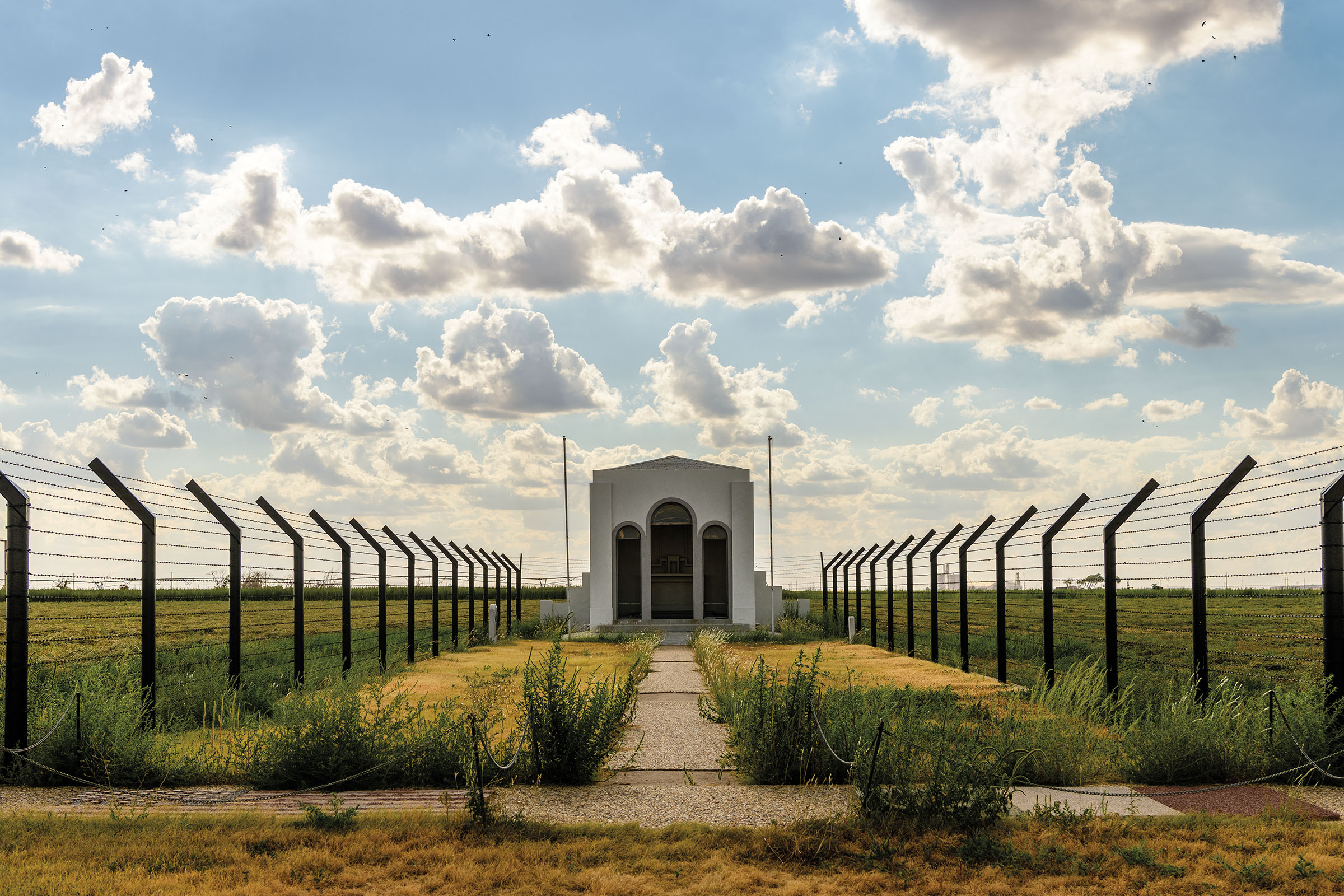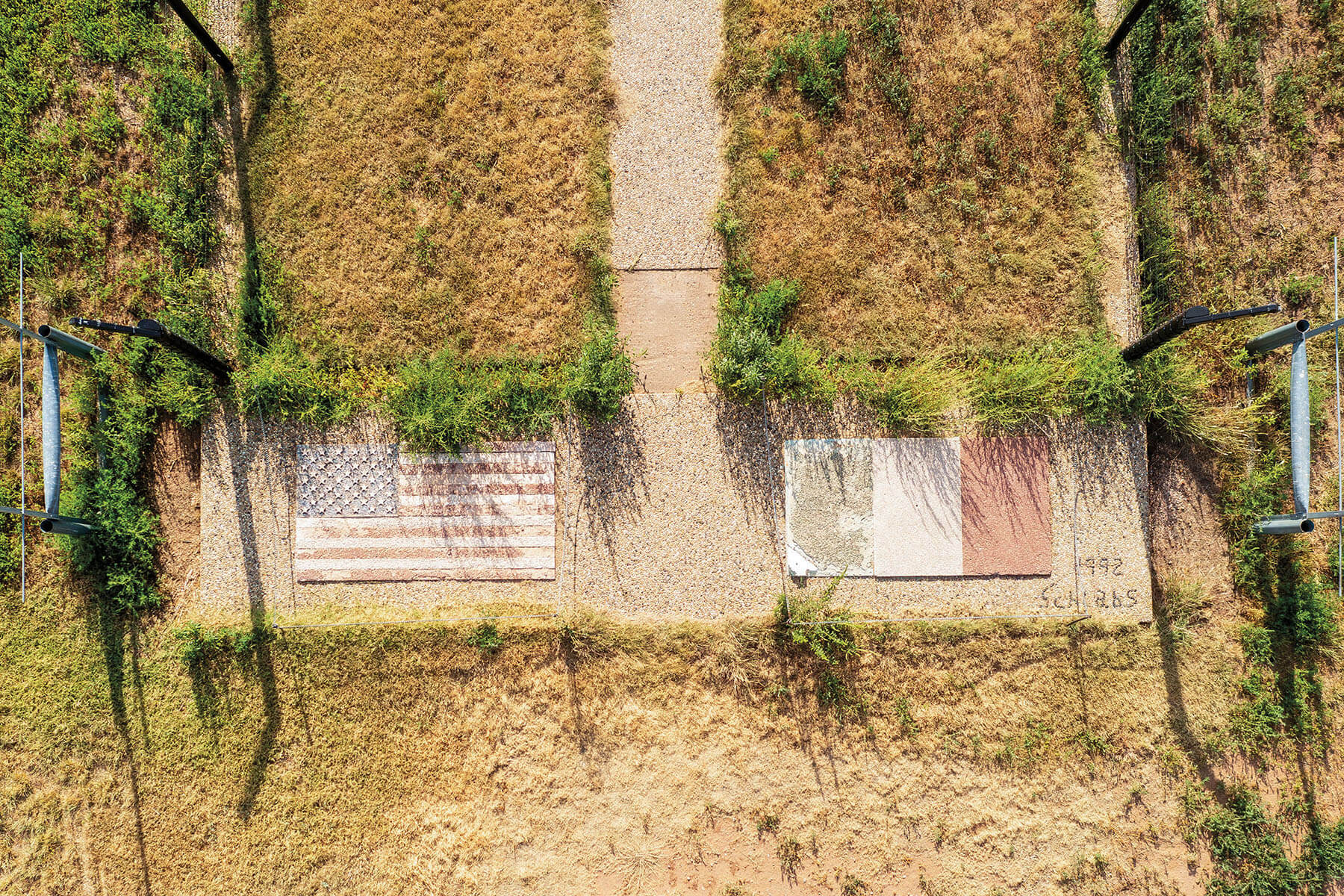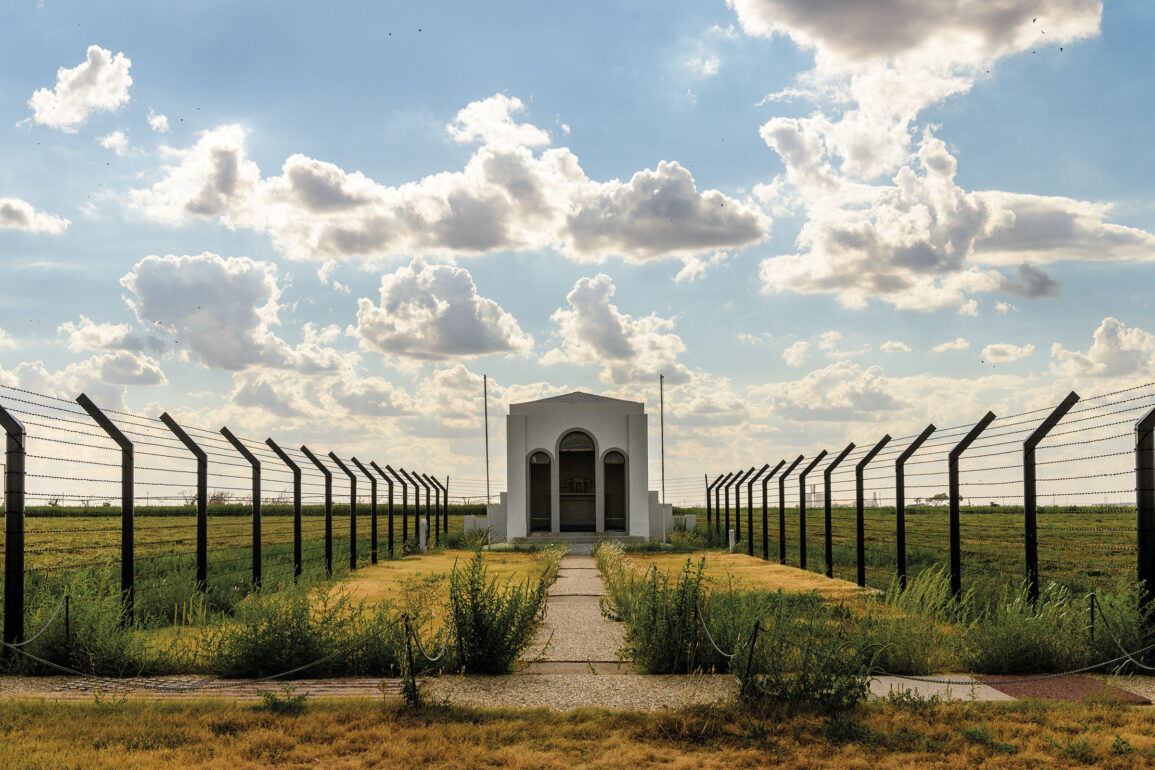
Buses filled with elderly men lumbered down dusty Panhandle roads and rolled to a stop at the edge of a cornfield. Wearing suits and ties, some pinned with Italian military medals, the men stepped onto the reddish dirt and walked toward a small white chapel tucked amid the stalks. They took turns entering the structure to read the inscription engraved in the floor in their native language: From the Italian prisoners to the companions who will not return.
The men scanned the horizon for landmarks they remembered from the 1940s, when they spent three years in Hereford confined in a camp for prisoners of World War II. Then, they embraced their hosts: the people of Castro and Deaf Smith counties, whose land they had worked, whose daughters they had presented with handmade jewelry, and whose letters they had answered for decades after the war. The American enemy. Their friends.
The 1988 reunion in the Panhandle was one of several gatherings to celebrate the improbable bond between the former Italian prisoners and the Texans on the other side of the barbed wire. Although locals initially viewed the camp with trepidation, the prisoners’ labor ultimately saved the area’s agricultural economy. And many of the Italians were talented artists and craftsmen who left their mark on the community in art and architecture still present today.
“All the workforce was in the war, and they were happy to get strong workers to plant or till,” says Kay Gfeller, a volunteer at the Castro County Historical Museum in Dimmitt. “They didn’t have to like them. … But as they worked together, that’s when all the relationships were built.”
Almost immediately after the U.S. entered World War II in 1941, the military began acquiring U.S. land for prison camps. Military leaders preferred sites in relatively isolated areas, away from the coast and on open, flat land where escapees could be spotted easily. Hereford, a town of about 2,300 people 45 miles southwest of Amarillo, met all the criteria.

The placement of the camp in Hereford intensified locals’ commitment to patriotic duty, says Joe D. Rogers, a retired teacher and part-time college instructor at West Texas A&M who wrote his master’s thesis about the camp. “The fact that the POW camp was here made a difference to the town, and the town made a difference to the Panhandle and to the war effort,” Rogers says.
At the same time, as residents interacted with the prisoners—even the committed fascists—they began to see them as young men not too different from their own sons. Today, the locals’ relationship with the POWs is a treasured chapter in the area’s history.
The Hereford camp, set on two farmers’ properties, was one of more than 600 across the U.S. that collectively held 425,000 prisoners from Germany, Italy, and Japan. Hundreds of workers from the Panhandle spent the latter half of 1942 building the massive camp before the first prisoners arrived in April 1943. Captured by Allied forces in North Africa, they were transported by ship through the Panama Canal to the West Coast, by train to Texas, and on foot to Hereford.
The camp encompassed four compounds with barracks, mess halls, and infirmaries and was surrounded by barbed wire fences monitored by armed guards. At its fullest, it held 3,860 prisoners. After Italy surrendered in 1943, the prime minister instructed Italian POWs to collaborate with the Allies. In the U.S., those who agreed were sent to work, under relaxed security, at sites across the country with labor shortages. Those who refused were sent to Texas.
“Most of them out here were the ardent fascists,” Rogers says. “They were sorted out from the rest of the Italians all over the United States and brought to Hereford.”
As more Texans entered military service, the farm labor pool shrank drastically. The military worked out a system that comported with the Geneva Convention’s rules about prisoner labor that allowed locals to hire willing prisoners to plant potatoes, harvest carrots, and even pour concrete for the Panhandle’s giant grain elevators. The men were paid 80 cents a day in camp scrip, which they could spend at the canteen on cigarettes, candy bars, beer, writing materials, and toiletries.
In their free time, the prisoners read, played soccer and bocce, took college courses, and performed musicals. They described these activities in postcards and letters they sent home, and word about the detainees’ positive treatment in Texas reached their brothers and cousins on the battlefield. By February 1945, the U.S. military stopped limiting the number of letters the prisoners could send, a move Rogers thinks was strategic. “What they’re writing is, ‘You need to go to the Americans. This is how we’re being treated. This is what I’m eating,’” Rogers says. “They influenced hundreds, if not thousands, of combatants to surrender rather than fight to the death.”
Despite their comparatively pleasant treatment, some prisoners plotted their escape from camp. Escapees walked away from work parties, and at least one was aided by a local woman who picked him up in her car. One was recaptured in Pecos after spending 10 days with a family on a farm, pretending to be a French sailor. A group of prisoners dug a tunnel under the barbed wire fence and into the cornfield beyond, but the passageway was discovered and destroyed before anyone used it.
Their creativity also yielded a wide variety of art and handicrafts. The prisoners painted Panhandle landscapes and portraits of local women. They hammered scrap metal from farmers’ junk piles into toy airplanes and coins into rings they gave to the farmers’ daughters. They built furniture and violins. In August 1945, after Japan’s surrender, the prisoners held a public art exhibition in an empty barracks. One of the guests was Rev. John Krukkert, the priest at St. Mary’s Catholic Church in Umbarger, about halfway between Hereford and Amarillo. Krukkert and the camp’s Catholic chaplain secured permission for nine artists, led by fascist noncollaborator Captain Franco Di Bello, to paint the bare white walls of the St. Mary’s sanctuary in exchange for home-cooked meals provided by the women of the church.
With their repatriation to Italy fast approaching, the men began working on a large mural of moments in Mary’s life: the angel Gabriel’s annunciation that she would give birth to Jesus; her visit to her cousin Elizabeth; and her assumption into heaven. The backgrounds in the first two paintings feature farmhouses and fields of harvest-ready wheat, landscapes the men saw outside the church. Two wood carvers—evidently entrusted with sharp implements—chiseled a highly detailed bas-relief image of the Last Supper on the front of the altar.
The weeks the prisoners spent painting the church allowed enough time to forge friendships with parishioners, some of whom corresponded with the artists for years afterward.
The Italians traveled back to Texas several times. “Just like our men go back to the battlefields in Europe, it’s a healing thing for them to come and visualize the place that they were captives,” says Debbie Batenhorst, who gives church tours.
The prisoners were returned to Italy beginning in late 1945, and the camp closed in March 1946. In the years following, the former owners purchased their land back from the government, and many of the barracks were sold to area school districts and hospitals; two now house collections of the Castro County Museum. By the time the men visited, the camp was gone.
Two landmarks still stand: a water tower and a small chapel. The latter was built by prisoners in late 1945 to honor the five men who died at the camp. Constructed with concrete made to look like marble, the roughly 100-square-foot structure has three arched windows, an altar, and a memorial inscription inside. A marker names the deceased, whose remains were moved to a POW cemetery in Oklahoma after the war.
Escape to Hereford
View art made by Italian prisoners of war at the Deaf Smith County Historical Museum in Hereford. 400 Sampson St. Open Mon-Fri 10 a.m.-noon and 1-4:45 p.m.; every fourth Saturday 10 a.m.-2 p.m. 806-363-7070; deafsmithcountymuseum.org
The Castro County Museum in Dimmitt holds photographs of the camp and a replica of the POW chapel’s altar. 404 Halsell St. Open by appointment only. 806-681-9261; facebook.com/groups/cchmuseum
Visit St. Mary’s Catholic Church, painted by POWs, in Umbarger. 22830 Pondaseta Road. Tours available by appointment.
806-499-3531;
stmarysumbarger.com
A chapel POWs built to honor five peers who died at the camp sits in a field south of Hereford, on the site of the former camp. County Road 507.
Wanting to honor the site’s history, the current landowner has arranged for permanent public access to the structure. Visitors can approach on a walkway flanked by tall barbed wire fences reminiscent of the barriers that once encircled the camp. The chapel looms at the end of the path, and in the evening, the Panhandle sunset blazes behind it. The shrine is a solitary reminder of a small community that rose from the plains during wartime and the lives it unexpectedly linked.
This post was originally published on this site be sure to check out more of their content.







